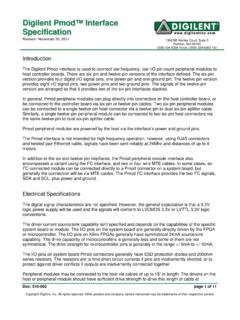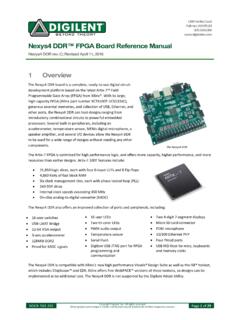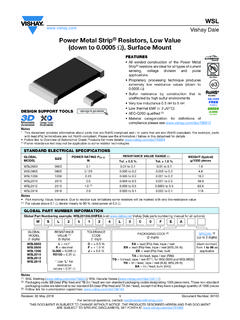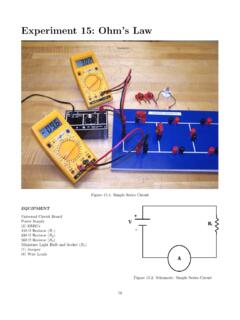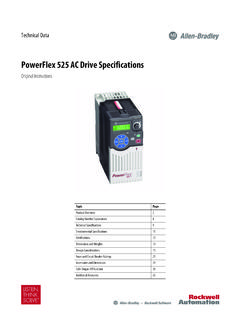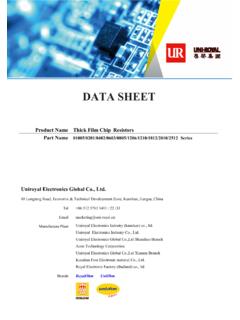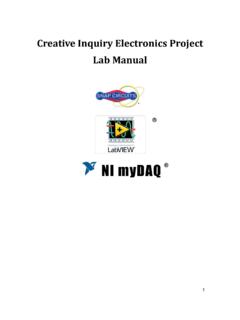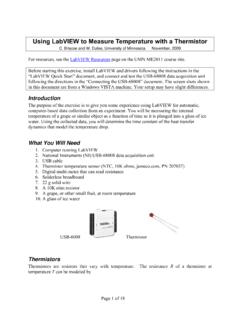Transcription of ZedBoard HW Users Guide - Digilent Reference
1 ZedBoard Zynq Evaluation and Development Hardware User s Guide Version August 1st, 2012 1-Aug-2012 1 Revision History Rev date Rev # Reason for change 8/1/12 Initial ZedBoard User s Guide 8/2/12 Mapped Configuration Mode Table to match ZedBoard layout 1-Aug-2012 2 Table of Contents 1 INTRODUCTION .. 3 ZYNQ BANK PIN ASSIGNMENTS .. 5 2 FUNCTIONAL DESCRIPTION .. 6 EPP .. 6 MEMORY .. 6 DDR3 .. 6 SPI Flash .. 9 SD Card Interface ..11 USB ..12 USB OTG ..12 USB-to-UART Bridge ..12 USB-JTAG ..13 USB circuit protection ..14 DISPLAY AND AUDIO ..14 HDMI Output ..14 VGA I2S Audio Codec ..18 OLED ..19 CLOCK SOURCES ..19 RESET SOURCES ..19 Power on Reset (PS_POR_B) ..19 Program Push Button Switch ..20 Processor Subsystem Reset ..20 USER I/O ..20 User Push Buttons.
2 20 User DIP Switches ..20 User LEDs ..21 10/100/1000 ETHERNET PHY ..21 EXPANSION HEADERS ..22 LPC FMC Connector ..22 Digilent Pmod Compatible Headers (2x6)..23 Agile Mixed Signaling (AMS) Connector, J2 ..24 CONFIGURATION MODES ..27 JTAG ..28 POWER ..29 Primary Power Input ..29 On/Off Switch ..29 Regulators ..29 Sequencing ..30 Power Good LED ..31 Power Estimation ..31 Testing ..31 Probes ..32 3 ZYNQ EPP BANKS ..33 ZYNQ EPP BANK VOLTAGES ..34 4 JUMPER SETTINGS ..35 5 MECHANICAL ..37 1-Aug-2012 3 1 Introduction The ZedBoard is an evaluation and development board based on the Xilinx Zynq-7000 Extensible Processing Platform. Combining a dual Corex-A9 Processing System (PS) with 85,000 Series-7 Programmable Logic (PL) cells, the Zynq-7000 EPP can be targeted for broad use in many applications. The ZedBoard s robust mix of on-board peripherals and expansion capabilities make it an ideal platform for both novice and experienced designers.
3 The features provided by the ZedBoard consist of: Xilinx XC7Z020-1 CSG484 CES EPP o Primary configuration = QSPI Flash o Auxiliary configuration options Cascaded JTAG SD Card Memory o 512 MB DDR3 (128M x 32) o 256 Mb QSPI Flash Interfaces o USB-JTAG Programming using Digilent SMT1-equivalent circuit Accesses PL JTAG PS JTAG pins connected through PS Pmod o 10/100/1G Ethernet o USB OTG o SD Card o USB FS USB-UART bridge o Five Digilent Pmod compatible headers (2x6) (1 PS, 4 PL) o One LPC FMC o One AMS Header o Two Reset Buttons (1 PS, 1 PL) o Seven Push Buttons (2 PS, 5 PL) o Eight dip/slide switches (PL) o Nine User LEDs (1 PS, 8 PL) o DONE LED (PL) On-board Oscillators o MHz (PS) o 100 MHz (PL) Display/Audio o HDMI Output o VGA (12-bit Color) o 128x32 OLED Display o Audio Line-in, Line-out, headphone, microphone Power o On/Off Switch o 12V @ 5A AC/DC regulator Software o ISE WebPACK Design Software o License voucher for ChipScope Pro locked to XC7Z020 1-Aug-2012 4 ZYNQ XC7Z020-CSG484 DDR3 MIC InLine InLine OutHdPhn Out32 PmodsQSPI7 PmodFlash814 GbitEnet12 USBOTG8SD21 LED,2 buttonsUSBContUSBUART3714 USBContClkFMC-LPCGPIO (8 LEDs,8 slide switches,5 pushbuttons)Type AHDMI Out8221827105 VGA (12-bit color)128x32 OLEDPHY1133 MhzResetPrimary JTAG512 Mbyte DDR3 (x32)
4 MIOPSPL1 PROGD isplayDDRPS_RSTJTAGPS_CLK<User Select>ENET/MDIOUSBOTGSDUSBUARTPS_GPIOQSPII2S/A CDGPIOFMCPMODHDMIVGAOLEDPROGPHYHDMI transmitterI2S AudioCodecXADC8 GPIO/VP/VN1 DONE LEDDONE Figure 1 ZedBoard Block Diagram 1-Aug-2012 5 Zynq Bank Pin Assignments The following figure shows the Zynq bank pin assignments on the ZedBoard followed by a table that shows the detailed I/O connections.. Figure 2 - Zynq Z7020 CSG484 Bank Assignments 1-Aug-2012 6 2 Functional Description EPP The ZedBoard features a Xilinx Zynq XC7Z020-1 CSG484 EPP. The initial ZedBoards ship with Engineering Sample "CES" grade silicon. Later shipments will eventually switch to production "C" grade silicon once they become available. The EPP part markings indicate the silicon grade. Memory Zynq contains a hardened PS memory interface unit. The memory interface unit includes a dynamic memory controller and static memory interface modules.
5 DDR3 The ZedBoard includes two Micron MT41K128M16HA-15E:D DDR3 memory components creating a 32-bit interface. The DDR3 is connected to the hard memory controller in the Processor Subsystem (PS) as outlined in the Zynq datasheet. The multi-protocol DDR memory controller is configured for 32-bit wide accesses to a 512 MB address space. The PS incorporates both the DDR controller and the associated PHY, including its own set of dedicated I/Os. DDR3 memory interface speeds up to 533 MHz (1066 Mbs) are supported. The DDR3 uses SSTL-compatible inputs. DDR3 Termination is utilized on the ZedBoard . The EPP and DDR3 have been placed close together keeping traces short and matched. DDR3 on the PS was routed with 40 ohm trace impedance for single-ended signals, and DCI resistors (VRP/VRN) as well as differential clocks set to 80 ohms. Each DDR3 chip needs its own 240-ohm pull-down on ZQ.
6 DDR-VDDQ is set to to support the DDR3 devices selected. DDR-VTT is the termination voltage which is DDR-VDDQ. DDR-VREF is a separate buffered output that is equal to nominal DDR-VDDQ. The DDR-VREF is isolated to provide a cleaner Reference for the DDR level transitions. 1-Aug-2012 7 The PCB design guidelines outlined in Zynq datasheet must be followed for trace matching, etc. Table 1 - DDR3 Connections Signal Name Description Zynq EPP pin DDR3 pin DDR_CK_P Differential clock output N4 J7 DDR_CK_N Differential clock output N5 K7 DDR_CKE Clock enable V3 K9 DDR_CS_B Chip select P6 L2 DDR_RAS_B RAS row address select R5 J3 DDR_CAS_B RAS column address select P3 K3 DDR_WE_B Write enable R4 L3 DDR_BA[2:0] Bank address PS_DDR_BA[2:0] BA[2:0] DDR_A[14:0] Address PS_DDR_A[14:0] A[14:0] DDR_ODT Output dynamic termination P5 K1 DDR_RESET_B Reset F3 T2 DDR_DQ[31:0] I/O Data PS_DDR_[31:0] DDR3_DQ pins DDR_DM[3:0] Data mask PS_DDR_DM[3:0] LDM/UDM x2 DDR_DQS_P[3:0] I/O Differential data strobe PS_DDR_DQS_P[3:0] UDQS/LDQS DDR_DQS_N[3:0] I/O Differential data strobe PS_DDR_DQS_N[3.]
7 0] UDQS#/LDQS# DDR_VRP I/O Used to calibrate input termination N7 N/A DDR_VRN I/O Used to calibrate input termination M7 N/A DDR_VREF[1:0] I/O Reference voltage H7, P7 H1 For best DDR3 performance, DRAM training is enabled for write leveling, read gate, and read data eye options in the PS Configuration Tool in Xilinx Platform Studio (XPS). The PS Configuration tools Memory Configuration Wizard contains two entries to allow for DQS to Clock Delay and Board Delay information to be specified for each of the four byte lanes. These parameters are specific to every PCB design. Xilinx Answer Record 46778 provides a tool for calculating these parameters by a printed circuit board design engineers. The Excel worksheet file included in the answer record provides instructions in the worksheet for calculating these board training details based upon specific trace lengths for certain DDR3 signals.
8 Using the information from the trace length reports pertaining to the DDR3 interface for ZedBoard these delay values can be recreated by following the directions found in the Excel worksheet. The PCB lengths are contained in the ZedBoard PCB trace length reports. The DQS to CLK Delay and Board Delay values are calculated specific to the ZedBoard memory interface PCB design. The AR46778 worksheet allows for up to 4 memory devices to be configured for DDR3 4x8 flyby topology. Note that ZedBoard is configured for DDR3 2x16 flyby routing topology. The first two clock trace midpoint values (CLK0 and CLK1) are used to represent the Micron device electrically nearest to 7Z020 (IC26) and the second two clock trace midpoint values (CLK2 and 1-Aug-2012 8 CLK3) are used to represent the Micron device electrically furthest from 7Z020 (IC25). The worksheet calculation results are shown in the following table.
9 Table 2 - DDR3 Worksheet Calculations Pin Group Length (mm) Length (mils) Package Length (mils) Total Length (mils) Propagation Delay (ps/inch) Total Delay (ns) DQS to CLK Delay (ns) Board Delay (ns) CLK0 470 160 CLK1 470 160 CLK2 470 160 CLK3 470 160 DQS0 504 160 DQS1 495 160 DQS2 520 160 DQS3 835 160 DQ[7:0] 465 160 DQ[15:8] 480 160 DQ[23:16] 550 160 DQ[31:24] 780 160 The DQS to CLK Delay fields in the PS7 DDR Configuration window should be populated using the corresponding values from the previous table. The configuration fields of the tool may not allow you to input a negative delay value, this is a known problem with the tools and scheduled for correction in the tools release. In the case of DQS2 and DQS3 fields for DQS to CLK Delay, simply enter a value of zero rather than the negative delay values.
10 This is an acceptable workaround since the calculated values are relatively close to zero and the values provided in these fields are used as initial values for the read/write training for DDR3. Keep in mind for LPDDR2 there is no write leveling, and for DDR2 there is no training whatsoever. In these memory use cases, the accuracy of the trace length info is more important. This is covered in further detail in section of the Xilinx Zynq TRM, UG585. Figure 3 - DQS to Clock Delay Settings The Board Delay fields in the PS7 DDR Configuration window should be populated using the corresponding values from the table above. Figure 4 - DDR3 Board Delay Settings 1-Aug-2012 9 SPI Flash The ZedBoard features a 4-bit SPI (quad-SPI) serial NOR flash. The Spansion S25FL256S is used on this board. The Multi-I/O SPI Flash memory is used to provide non-volatile code, and data storage.
